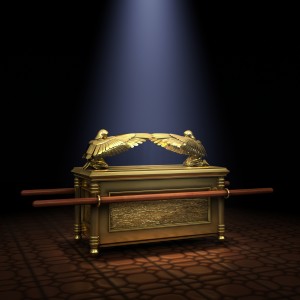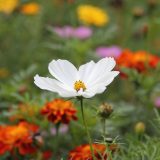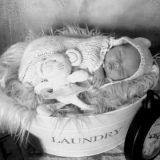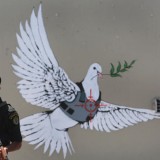Mind-boggling details with a simple message……
If the intricacies of design are your thing or ‘Raiders of the Lost Ark’ is your favourite film, then this next section from Exodus 25 to 30 may really light your candle. If not, let’s give a brief summary of the details and then try to take something for today from the construction of the ark and the tabernacle.
This is the plan –
“Tell the Israelites to bring me an offering. You are to receive the offering for me from everyone whose heart prompts them to give. These are the offerings you are to receive from them: gold, silver and bronze; blue, purple and scarlet yarn and fine linen; goat hair; ram skins dyed red and another type of durable leather; acacia wood; olive oil for the light; spices for the anointing oil and for the fragrant incense; and onyx stones and other gems to be mounted on the ephod and breastpiece.
Then have them make a sanctuary for me, and I will dwell among them. Make this tabernacle and all its furnishings exactly like the pattern I will show you.” Exodus 25:2-9
The Ark: a chest made of acacia wood overlaid with pure gold and a golden cherub at each end with acacia wood carrying poles. Question: this is the first time cherubim are mentioned so how did the Israelites know what they looked like?
The Table: a table made of acacia wood overlaid with pure gold with acacia wood carrying poles. All the plates and dishes and pitchers and bowls are to be pure gold too.
The Lampstand: a lampstand hammered out of pure gold with six branches with three cups on each branch. The lamps and wick trimmers and trays are all to be made from pure gold.
The Tabernacle: a tabernacle to be made from ten embroidered linen curtains with eleven curtains of goats hair for the tent over the tabernacle, then a covering of ram skins and then a covering of sea cow hides (as in manatees? Who knew lol?!?!!) The upright frames and crossbars are to be made from acacia wood. The Ark is to be placed within the Tabernacle behind another finely crafted linen curtain – this is the Most Holy Place. The table and lampstand are to be placed outside this curtain.
The Altar of Burnt Offering: the altar is to be carved with four horns all out of one piece of acacia wood (although hollow to be easily carried) and overlaid with bronze. All the utensils are to be made from bronze. And not forgetting the four carrying poles made from acacia wood.
The Courtyard: linen curtains with posts and bronze bases to be set out to exact measurements.
Oil for the lampstand: this needs to be the purest olive oil and the lamps need to be kept burning at all times.
The priestly garments: these include the breastpiece, ephod, robe, woven tunic, turban and sash, using gold; blue, purple and scarlet yarn; fine linen and precious stones.
There is a whole ceremony for the consecration of the priests including special food, a washing and dressing and anointing ceremony and the slaughter of a bull and two rams. The attention to detail is phenomenal –
Slaughter it, take some of its blood and put it on the lobes of the right ears of Aaron and his sons, on the thumbs of their right hands, and on the big toes of their right feet. Exodus 29:20
And then every day for seven days, a bull and two lambs have to be sacrificed.
The Altar of Incense: again made of acacia wood with four horns and overlaid with pure gold, with acacia wood carrying poles. This time for fragrant incense to be offered by the priest morning and evening and for an annual atonement ceremony.
Atonement Money: this is a kind of tax for everyone over 20, exactly the same if you are rich or poor, to atone for your life, a ransom for your life…….
The Basin: The basin and the washstand are to be made of bronze.
Then there is a recipe for the anointing oil –
Take the following fine spices: 500 shekels of liquid myrrh, half as much (that is, 250 shekels) of fragrant cinnamon, 250 shekels of fragrant calamus, 500 shekels of cassia—all according to the sanctuary shekel—and a hin of olive oil. Exodus 30:23-24
– that is to be used to anoint every surface within the tabernacle and Aaron and the other priests.
And then a recipe for incense –
Take fragrant spices—gum resin, onycha and galbanum—and pure frankincense, all in equal amounts, and make a fragrant blend of incense, the work of a perfumer. It is to be salted and pure and sacred. Exodus 30:34-35
And there we have it. Are you still awake?
I really struggle to understand why any of this mattered to God. The image I have of God does not care about outward show and ceremony and getting it just right. God is not confined to one place and to one ceremony and accessed only by special individuals………but maybe here I go again, trying to make that context fit our context, make how God chose to reveal himself to that particular people equate with how he would choose to reveal himself to us today.
But it mattered then, if this is all about trust and obedience. Having very strict instructions meant that this became a good test of how far the Israelites were prepared to play by God’s rules. They didn’t have the benefit of hindsight and history and tradition and spiritual experience that we have to draw on today. God had to show very clearly that he was with his people and they had to show clearly that they were willing to trust and obey. God is establishing a strength of relationship with his people that will need to last through the generations.
Then I will dwell among the Israelites and be their God. They will know that I am the Lord their God, who brought them out of Egypt so that I might dwell among them. I am the Lord their God. Exodus 29:45-46
We are back to EMMANUEL – GOD WITH US – again.
The sacred garments for the priests are like a uniform ‘to give them dignity and honour’. Everyone will know where they stand, just like we do when faced with a recognisable uniform today.
 But the part I like best in all of this is where we started –
But the part I like best in all of this is where we started –
Tell the Israelites to bring me an offering. (This is God’s command)
You are to receive the offering for me from everyone whose heart prompts them to give. (But it is not a demand. It’s a heartfelt offering of thanks and love for the one true God who has rescued these people. They know how much they owe him. Nothing they give him can ever be enough.)
These are the offerings you are to receive from them: gold, silver and bronze; blue, purple and scarlet yarn and fine linen; goat hair; ram skins dyed red and another type of durable leather; acacia wood; olive oil for the light; spices for the anointing oil and for the fragrant incense; and onyx stones and other gems to be mounted on the ephod and breastpiece. (and the offerings are not inconsequential – they are huge, extravagant, generous…..)
We struggle a lot with the whole concept of giving. Whether it is paying taxes, giving to charity or facing the collection plate in a church, our natural reaction can be ‘What’s mine is mine.’ And that is true – you have earned it, you deserve it, it is yours to do what you want with.
And yet sometimes what we choose to do with it is staggeringly huge, breathtakingly extravagant and wonderfully generous. Our hearts prompt us to give. Because deep down, we are grateful for what we have, we are aware that we are more fortunate than many and we do believe it when we say to God
Everything we have is yours and of your own do we give you.













